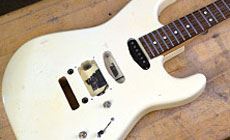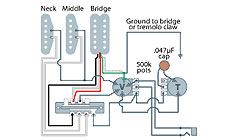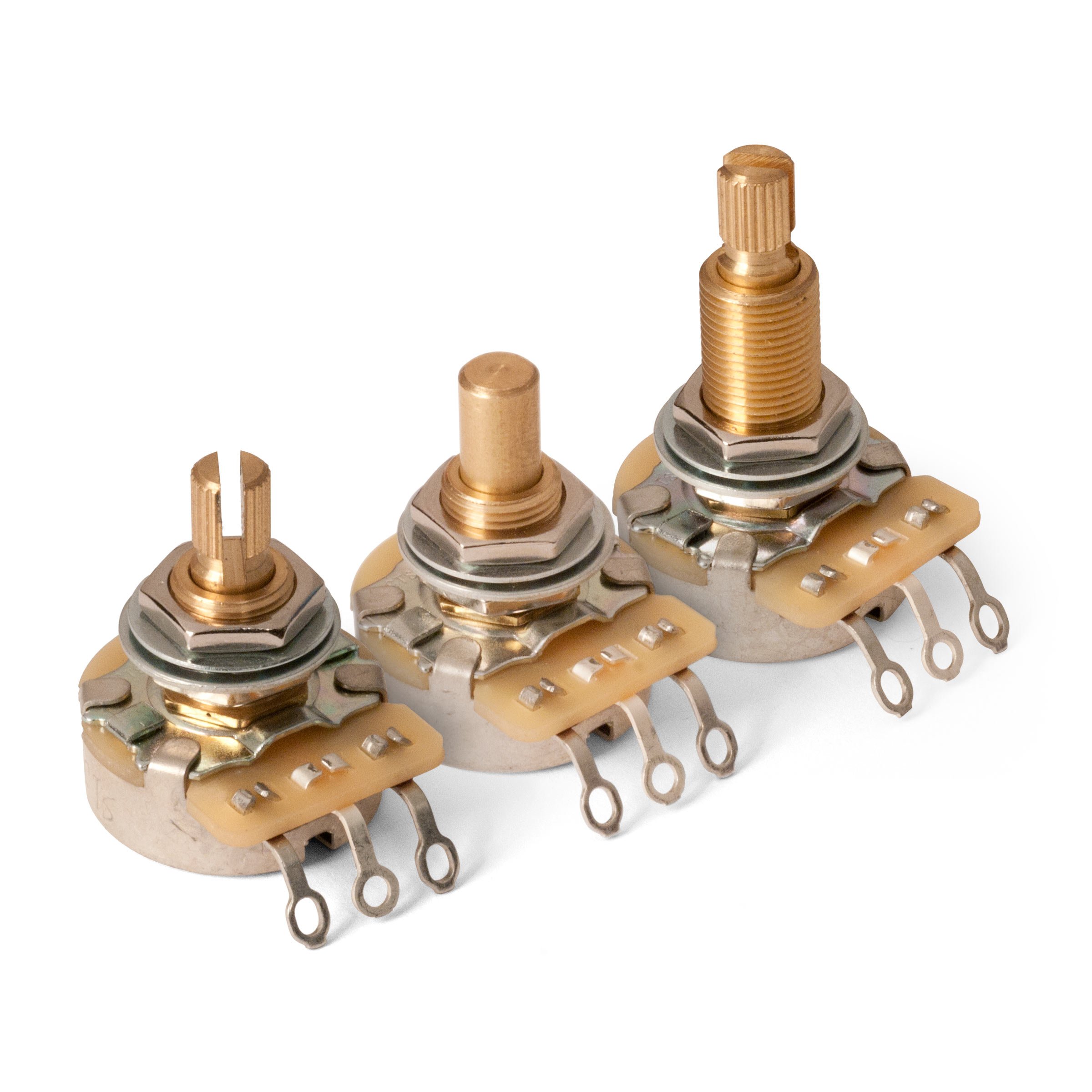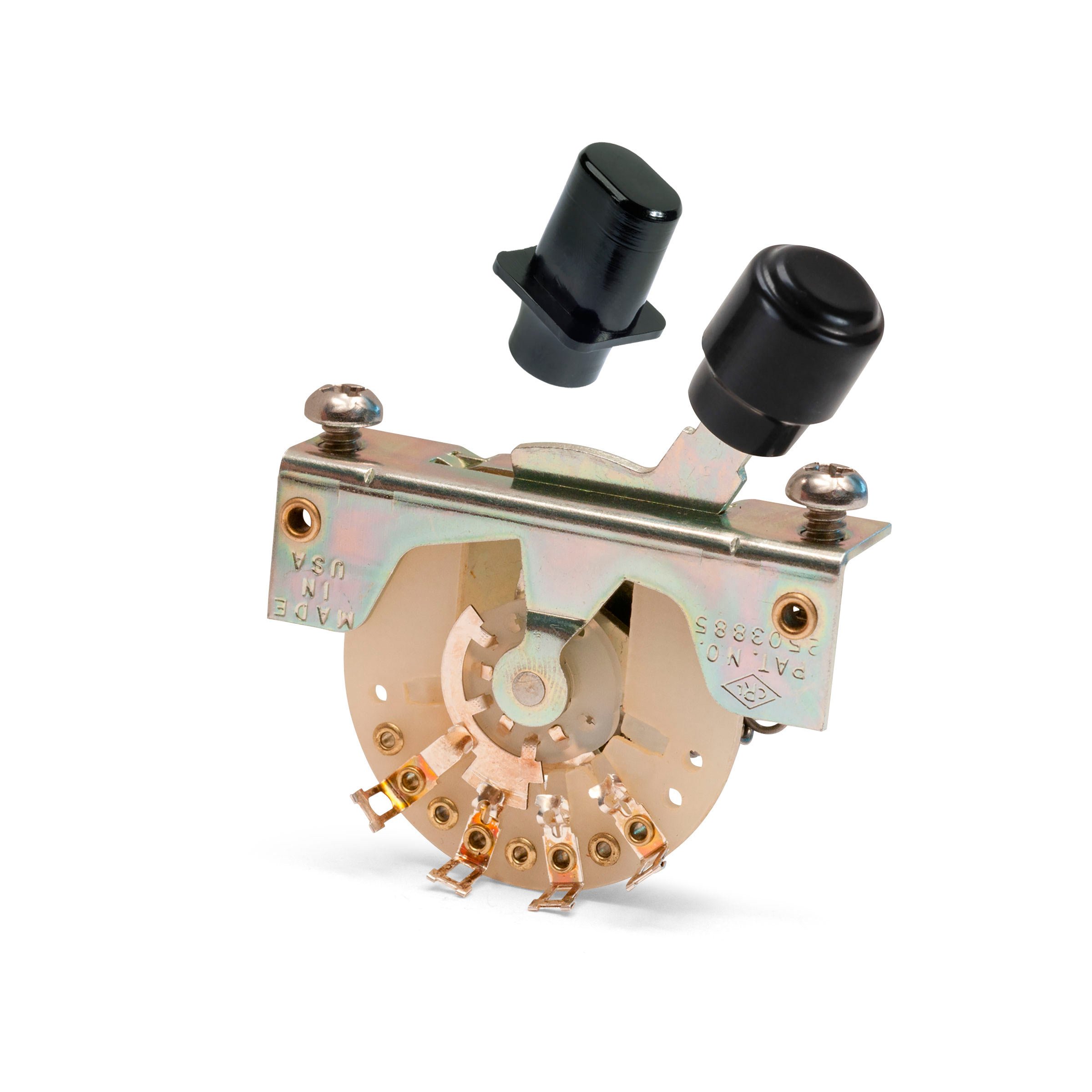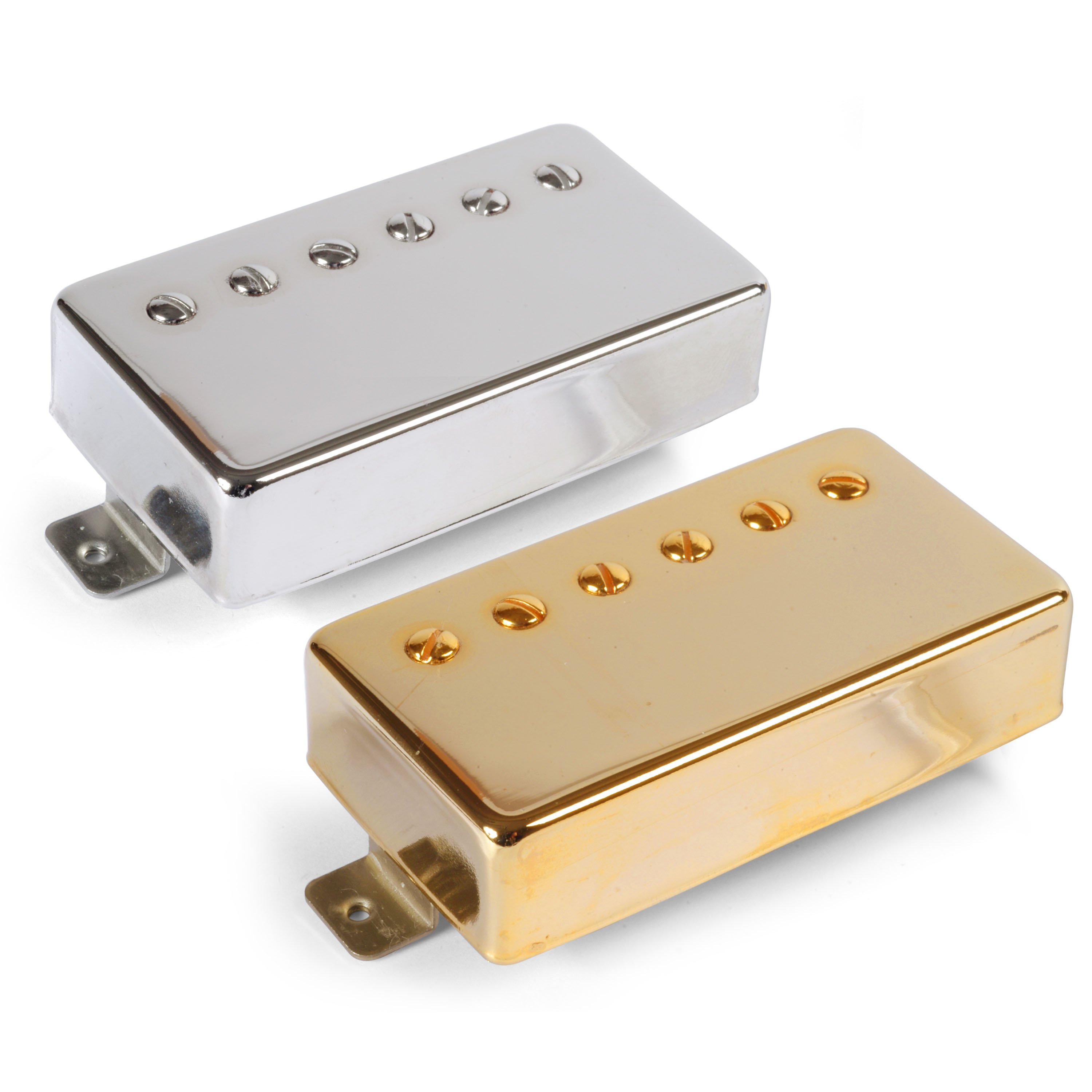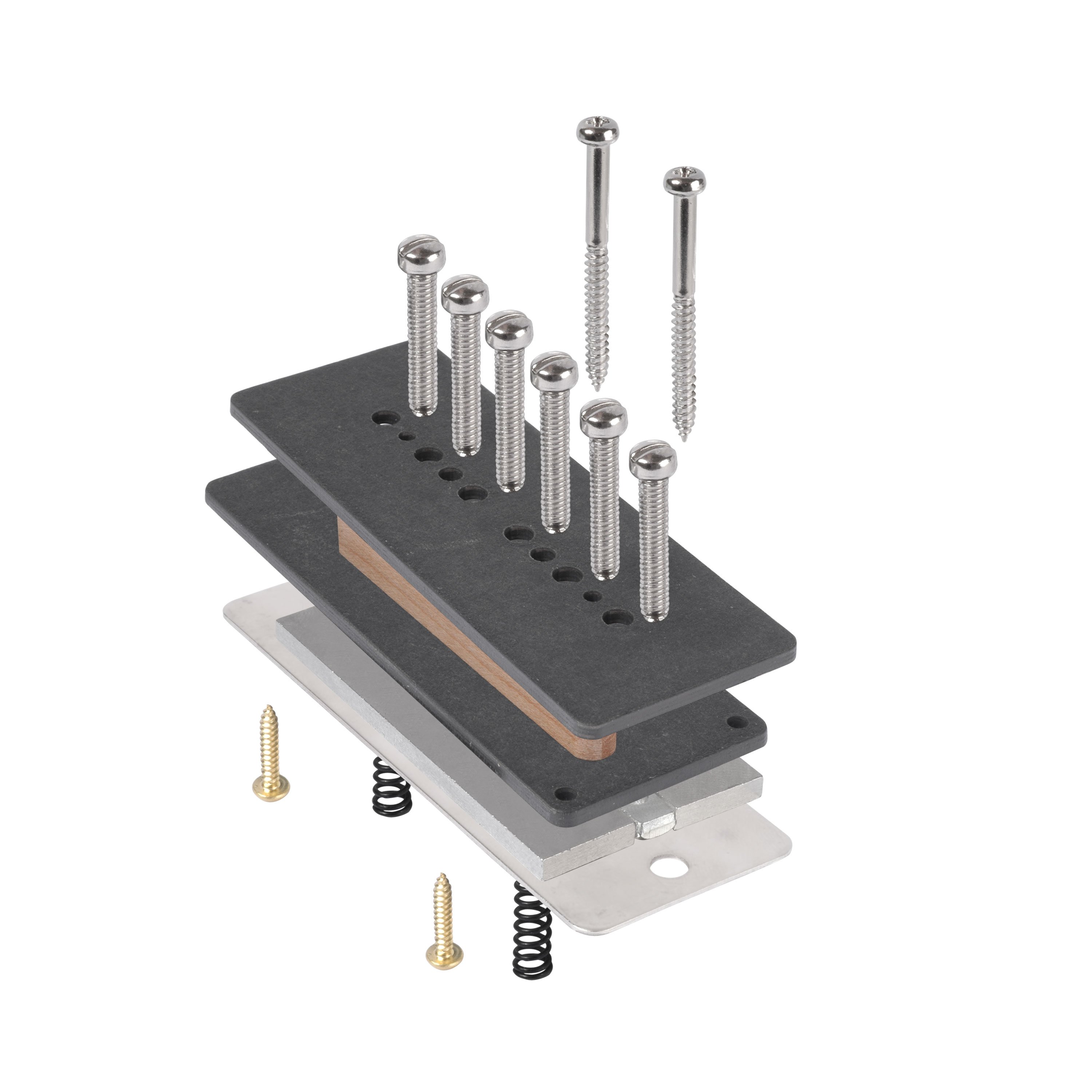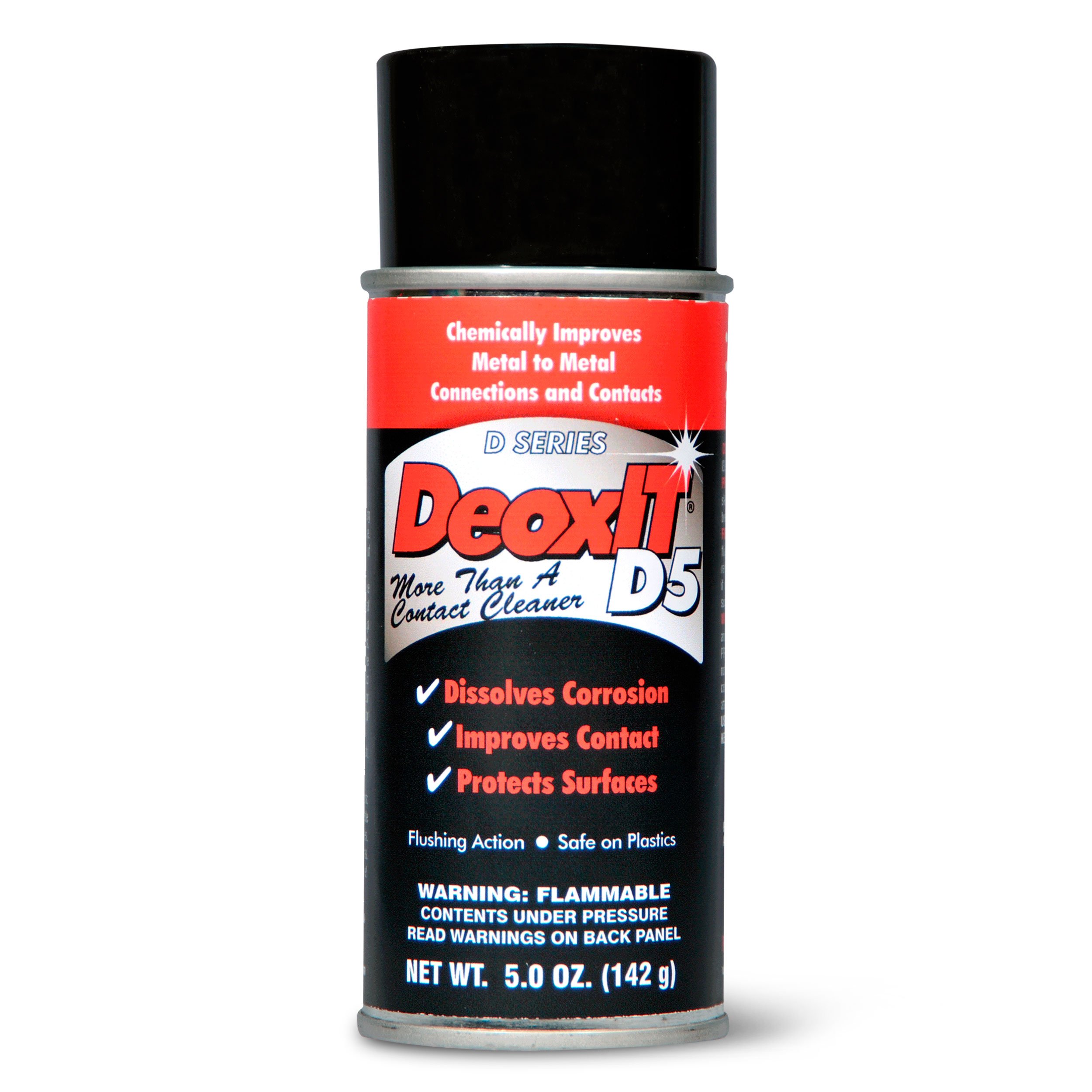Coil-cuts: how to hop up your humbuckers
No-cost humbucker modifications Seth Lover was the Gibson engineer who created the hum-canceling pickup back in 1955. Lover’s dual-coil “Patent Applied For” (PAF) design had one output wire, wrapped in a braided shield that provided a ground connection. This delivered the classic sound of both coils connected in series. The replacement pickup market was jump-started in the early 70s when NYC luthier Charlie LoBoue handed a young shop helper, Larry DiMarzio, a box of old pickups to see if he could repair them. Studying these old pickups laid the groundwork for Larry’s first model, the Super Distortion. The first DiMarzios provided access to the series link between the two humbucker coils, using a 3-conductor lead wire. This created the option of cutting out one coil for single coil operation. Soon, DiMarzio added more flexibility by using a 4-conductor lead wire, like this drawing: Basically, a humbucker is two coils, linked in series with two lead wires. Cutting the series link between coils creates four leads, for more options. This new design separated the start and finish wraps of each coil with tidy little colored lead wires, plus a separate ground wire and shield. 4-conductor pickups were a hit, and nearly every pickup maker started offering this option. You can wire them to be in/out of phase to get that funky “nasal” sound, or you can create a series/parallel option for noticably more output. Creating a coil cut gives you both humbucker and single-coil sounds from the same pickup. Today I’m going to show some cool coil cutting tricks you can do with the pickups and parts you’ve already got. None of these simple mods require changing any parts! Let’s start with what those little color-coded wires connect to. The picture below shows the color code we use on our Golden Age Humbuckers, but your pickup might use a different color scheme. Check out the electronics section in the free info pages of stewmac.com for a list of other manufacturers’ color codes so you can translate this to your pickup. A customer brought me this yellow Les Paul made by Gibson’s Custom Shop, asking for a coil cut on the bridge pickup. He wanted the option of cutting the coil for a single-coil sound, but he didn't want to add any switches or different pots. (No hole-drilling!) We rewired this guitar to be simlar to a Flying V, with two independent volume controls and one master tone. That left one tone pot unused, which we wired up as the coil cut. When that pot’s cranked to 10, you get the full humbucker; as you dial it down it gradually cuts the coil. This collection of parts belongs to me. I can’t honestly call it a Strat; let’s say it’s a Strat-shaped object. For years I’ve used this modified wiring: the middle switch position combines the cut coils in the neck and bridge humbuckers. I use a 3-way CRL switch: a design that's stayed pretty much unchanged for over 50 years. If your guitar doesn’t have a CRL switch, the lugs may be arranged differently from mine. Below is a lug map to translate the lug setup between the CRL switch and some other kinds: My pal Jim is having me refurbish this husk of an 80's Charvel. Cool huh?! I wired up new Golden Age pickups so that Position 4 (middle/bridge) cuts one of the humbucker coils for single coil operation — an easy job! These coil-cutting mods expand the tonal possibilities of your guitar with the components the factory gave you. So grab your soldering iron and have at it!What do these colored wires do?



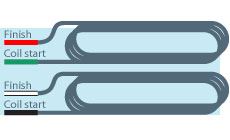
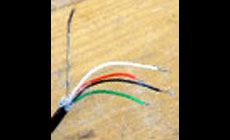
Three cool coil-cutting tips:


1. A pot-controlled coil-cut:

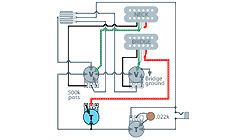
2. Half neck & half bridge

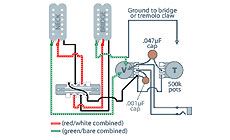
Electroswitch by CRL

Imported switch

Megaswitch T or S models

3. Easy, switchable coil-cut:
